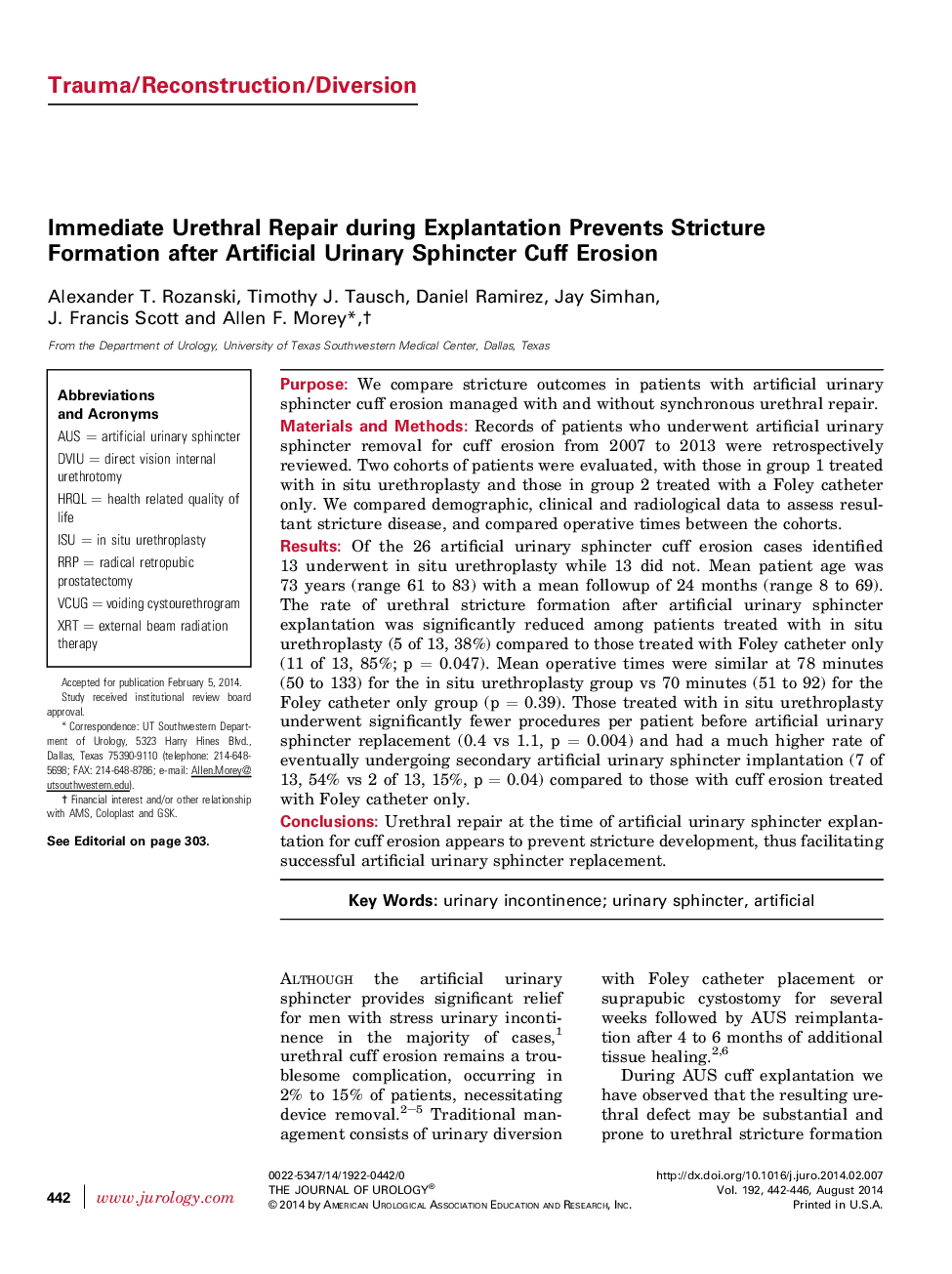| Article ID | Journal | Published Year | Pages | File Type |
|---|---|---|---|---|
| 3861088 | The Journal of Urology | 2014 | 5 Pages |
PurposeWe compare stricture outcomes in patients with artificial urinary sphincter cuff erosion managed with and without synchronous urethral repair.Materials and MethodsRecords of patients who underwent artificial urinary sphincter removal for cuff erosion from 2007 to 2013 were retrospectively reviewed. Two cohorts of patients were evaluated, with those in group 1 treated with in situ urethroplasty and those in group 2 treated with a Foley catheter only. We compared demographic, clinical and radiological data to assess resultant stricture disease, and compared operative times between the cohorts.ResultsOf the 26 artificial urinary sphincter cuff erosion cases identified 13 underwent in situ urethroplasty while 13 did not. Mean patient age was 73 years (range 61 to 83) with a mean followup of 24 months (range 8 to 69). The rate of urethral stricture formation after artificial urinary sphincter explantation was significantly reduced among patients treated with in situ urethroplasty (5 of 13, 38%) compared to those treated with Foley catheter only (11 of 13, 85%; p = 0.047). Mean operative times were similar at 78 minutes (50 to 133) for the in situ urethroplasty group vs 70 minutes (51 to 92) for the Foley catheter only group (p = 0.39). Those treated with in situ urethroplasty underwent significantly fewer procedures per patient before artificial urinary sphincter replacement (0.4 vs 1.1, p = 0.004) and had a much higher rate of eventually undergoing secondary artificial urinary sphincter implantation (7 of 13, 54% vs 2 of 13, 15%, p = 0.04) compared to those with cuff erosion treated with Foley catheter only.ConclusionsUrethral repair at the time of artificial urinary sphincter explantation for cuff erosion appears to prevent stricture development, thus facilitating successful artificial urinary sphincter replacement.
